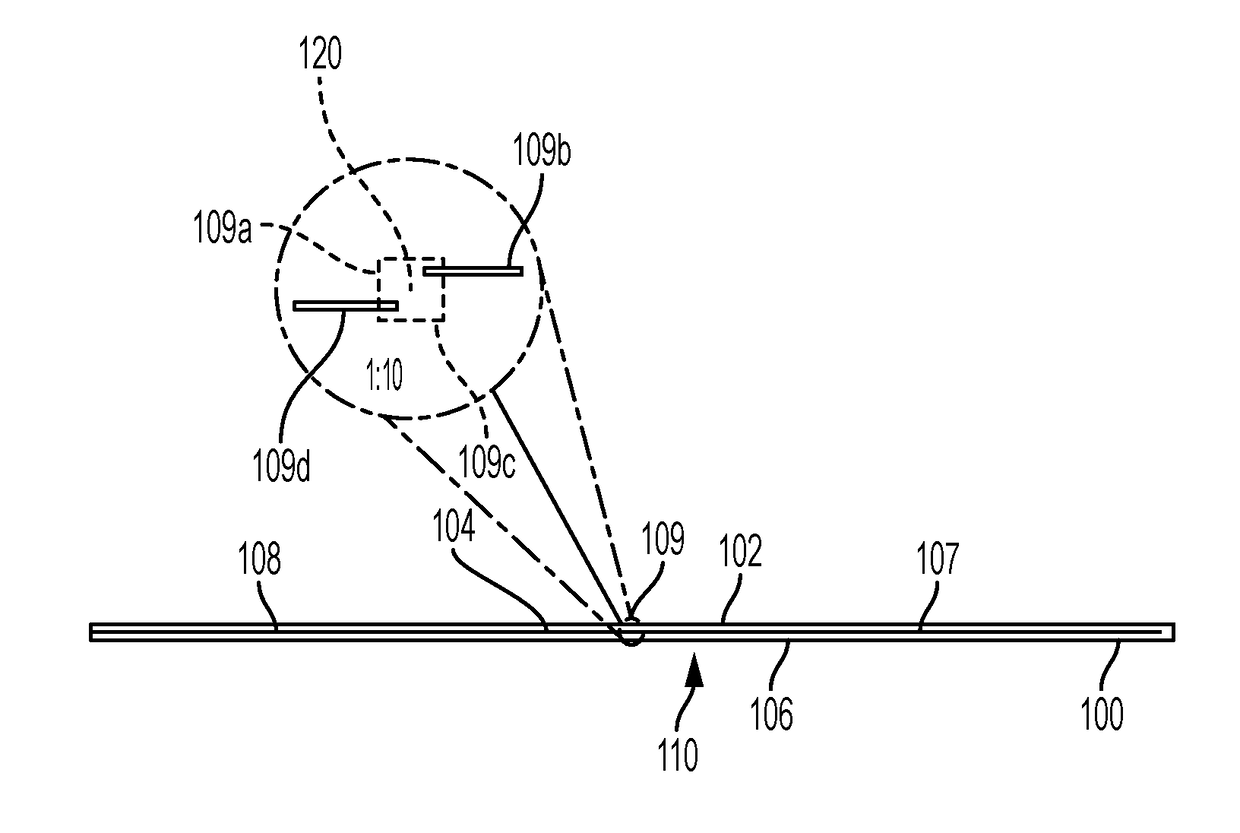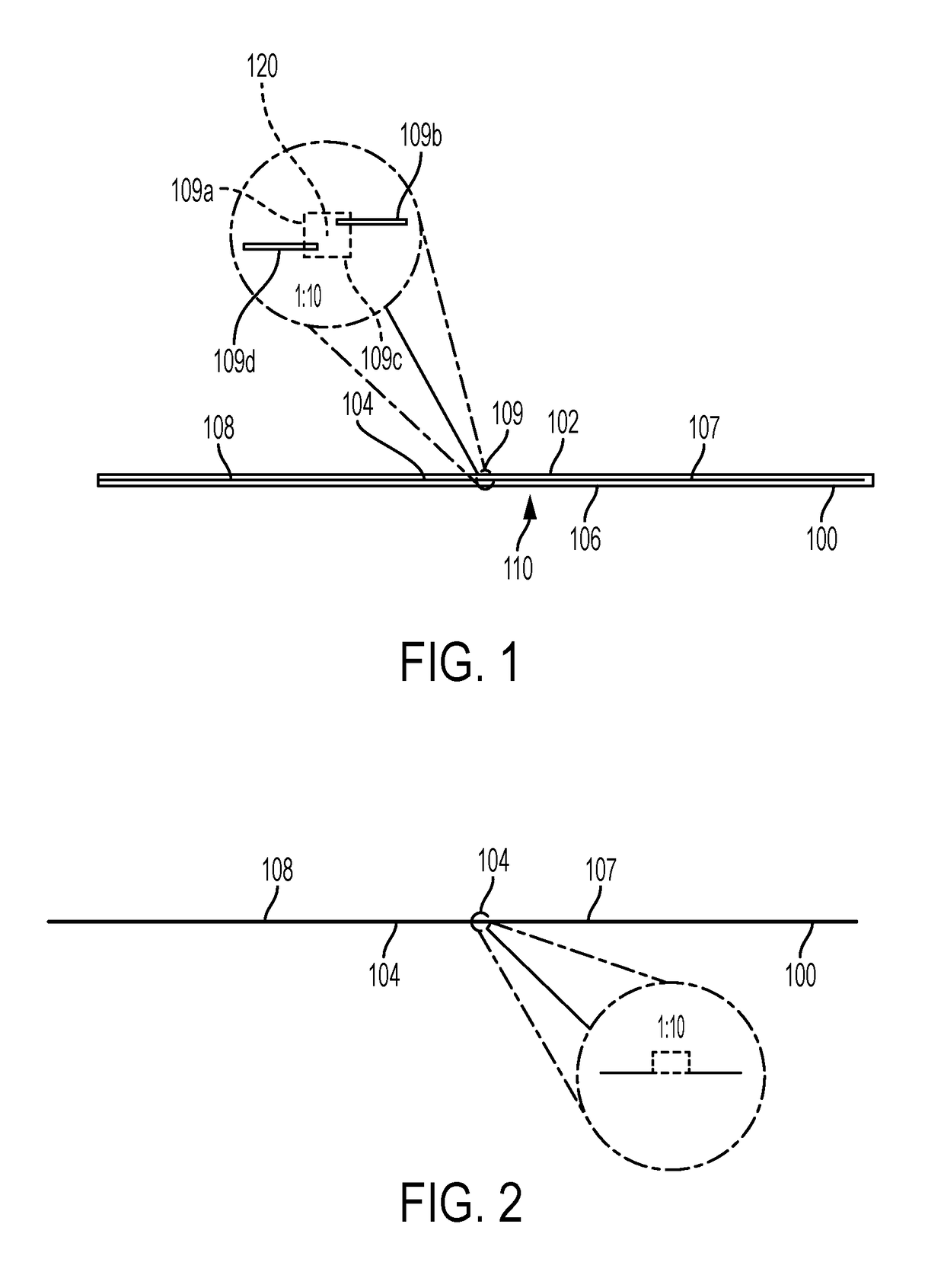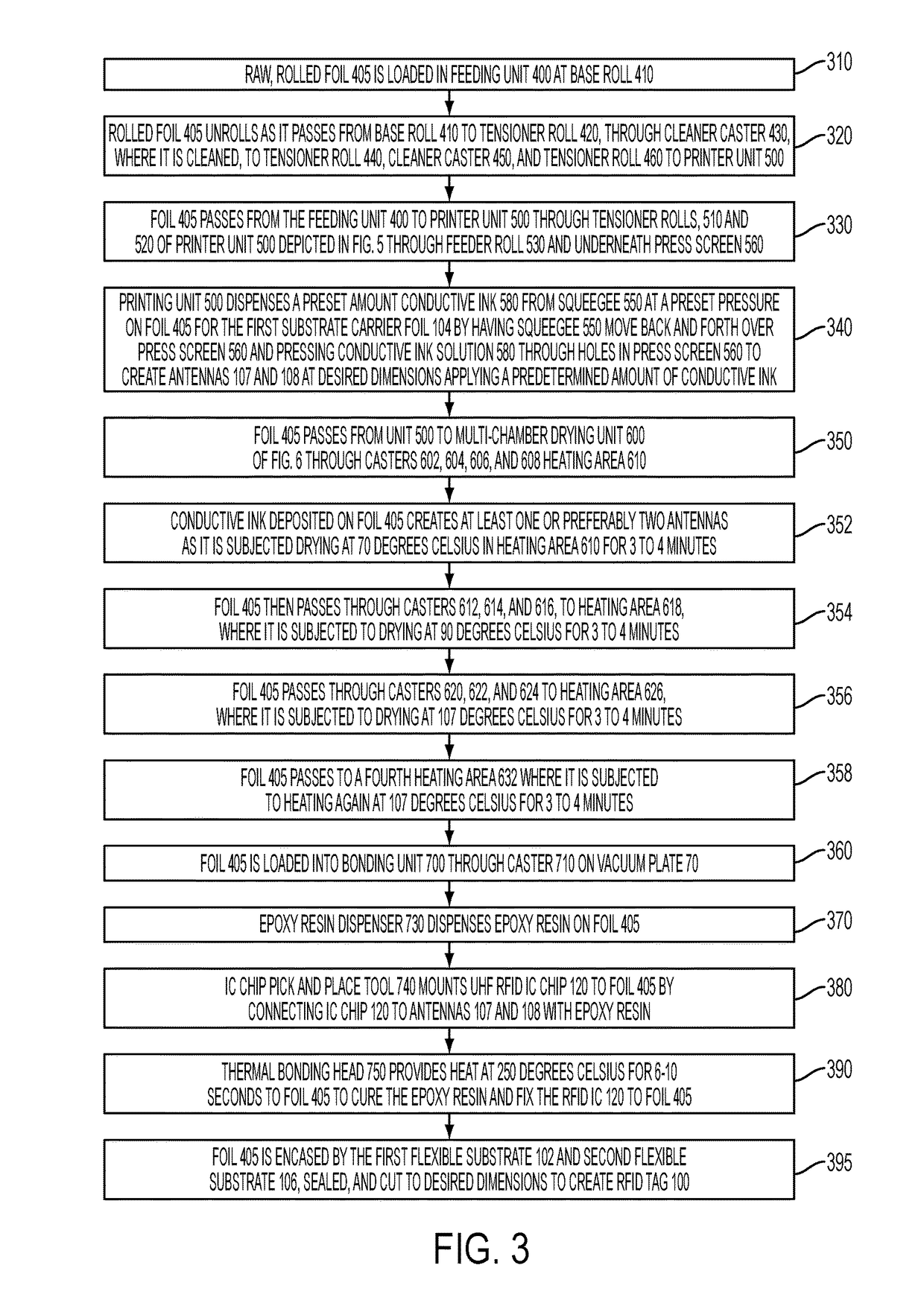RFID tag and methods of use and manufacture
a technology of rfid tags and antennas, applied in the field of radio frequency identification, can solve the problems of rfid tags attached to laundry clothes that can sometimes be damaged, tags with antennas that are more susceptible to breaking easily, and damage clothing, laundry or other materials in which the tags are used, and achieves significant cost savings and advantageous durability and performan
- Summary
- Abstract
- Description
- Claims
- Application Information
AI Technical Summary
Benefits of technology
Problems solved by technology
Method used
Image
Examples
Embodiment Construction
[0037]FIGS. 1 and 2 depict a top and side view of RFID tag 100, with a first flexible substrate 102 and second flexible 106 substrate. The first flexible substrate 102 and second flexible substrate 106 are preferably made from a flexible, waterproof material. Suitable materials for the first flexible substrate 102 and second flexible substrate 106 include kapton, polyethylene terephthalate (PET) polymide, textile, paper, and even human or animal skin. Dimensions for the first flexible substrate 102 and second flexible substrate 106 are preferably 155 nm (nanometers) in length each, with a width of 2 mm and thickness of 0.2 mm, but can be made to be 5 to 255 nm in length, 2 to 100 mm in width, and with a thickness of 0.2 to 2 mm. The first substrate 102 houses a first substrate carrier foil 104. The first substrate foil carrier 104 preferably has two preferably needle shaped antennas 107 and 108 printed thereon from a conductive ink solution. The two needle shaped antennas 107 and 10...
PUM
 Login to View More
Login to View More Abstract
Description
Claims
Application Information
 Login to View More
Login to View More - R&D
- Intellectual Property
- Life Sciences
- Materials
- Tech Scout
- Unparalleled Data Quality
- Higher Quality Content
- 60% Fewer Hallucinations
Browse by: Latest US Patents, China's latest patents, Technical Efficacy Thesaurus, Application Domain, Technology Topic, Popular Technical Reports.
© 2025 PatSnap. All rights reserved.Legal|Privacy policy|Modern Slavery Act Transparency Statement|Sitemap|About US| Contact US: help@patsnap.com



